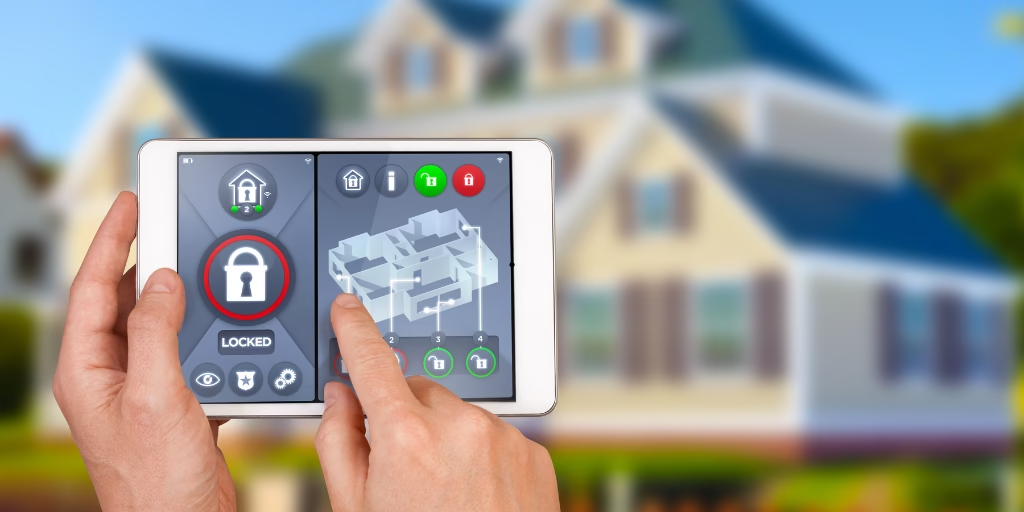How to Secure Your Home with Smart Home Indoor and Outdoor Technology
Your home’s exterior is the first point of contact for intruders, making outdoor smart devices a great way of preventing unauthorised access.
Outdoor Smart Security Devices
- Smart Security Cameras: These devices offer HD video, night vision, motion detection, and AI powered object recognition. Cameras positioned at entry points help monitor activity and deter suspicious behaviour.
- Video Doorbells: With two way audio and real time notifications, video doorbells let you see and communicate with visitors even when you’re at home or away.
- Smart Lighting: Outdoor smart lights illuminate dark areas and can be linked with smart motion sensors to turn on when movement is detected, acting as both a deterrent and a safety feature.
- Smart Locks: Control access to your property using your smartphone or voice commands. For example, a smart padlock on your garden gate
- Perimeter Sensors: Motion or contact sensors placed along fences or gardens alert you to movement.
Indoor Smart Tech: Securing Your Home
Indoor smart home devices work to safeguard your family and possessions while offering other conveniences.
- Smart Alarms: Integrate with cameras and sensors to provide instant alerts and notify emergency services if needed.
- Indoor Security Cameras: Monitor key areas like hallways and living rooms, with privacy modes to ensure you’re not being recorded unnecessarily.
- Smart Sensors: Door and window sensors alert you to tampering, while glass break sensors detect breaking glass and trigger alarms.
- Environmental Sensors: Smart smoke detectors, carbon monoxide sensors, and water leak sensors protect against non crime hazards.
- Smart Locks: Provide secure, keyless entry using keycodes, fingerprints, or smartphone controls. Smart locks can be super useful for securing holiday homes that are rented out
Creating the Illusion of Occupancy
Smart home technology can make it appear as though someone is always home, deterring potential intruders.
- Smart Lights: Schedule lights to turn on and off in a natural pattern, mimicking typical household activity.
- Smart Blinds and Curtains: Automate blinds to open and close based on time or light sensors, creating the impression that someone is home.
- Smart Plugs: Automate appliances like TVs or radios, turning them on occasionally to simulate activity.
- Integration with Routines: Set up routines with platforms like Alexa, where lights, blinds, and appliances work together at specific times.
The Power of Integration
What makes smart home security truly powerful is the ability to integrate outdoor and indoor systems into a unified system. By using hubs or apps, you can monitor all devices from a single dashboard.
- Outdoor cameras can trigger indoor lights to turn on when motion is detected.
- A smart doorbell alert can activate an indoor chime or send a notification to all household members.
- Unexpected movement detected by indoor sensors can turn on outdoor floodlights.
Final Thoughts
By combining outdoor and indoor smart home technologies, you can create a cohesive security system that not only protects your home but also enhances your daily life. The seamless integration of these tools ensures your home remains a sanctuary, no matter where you are.





